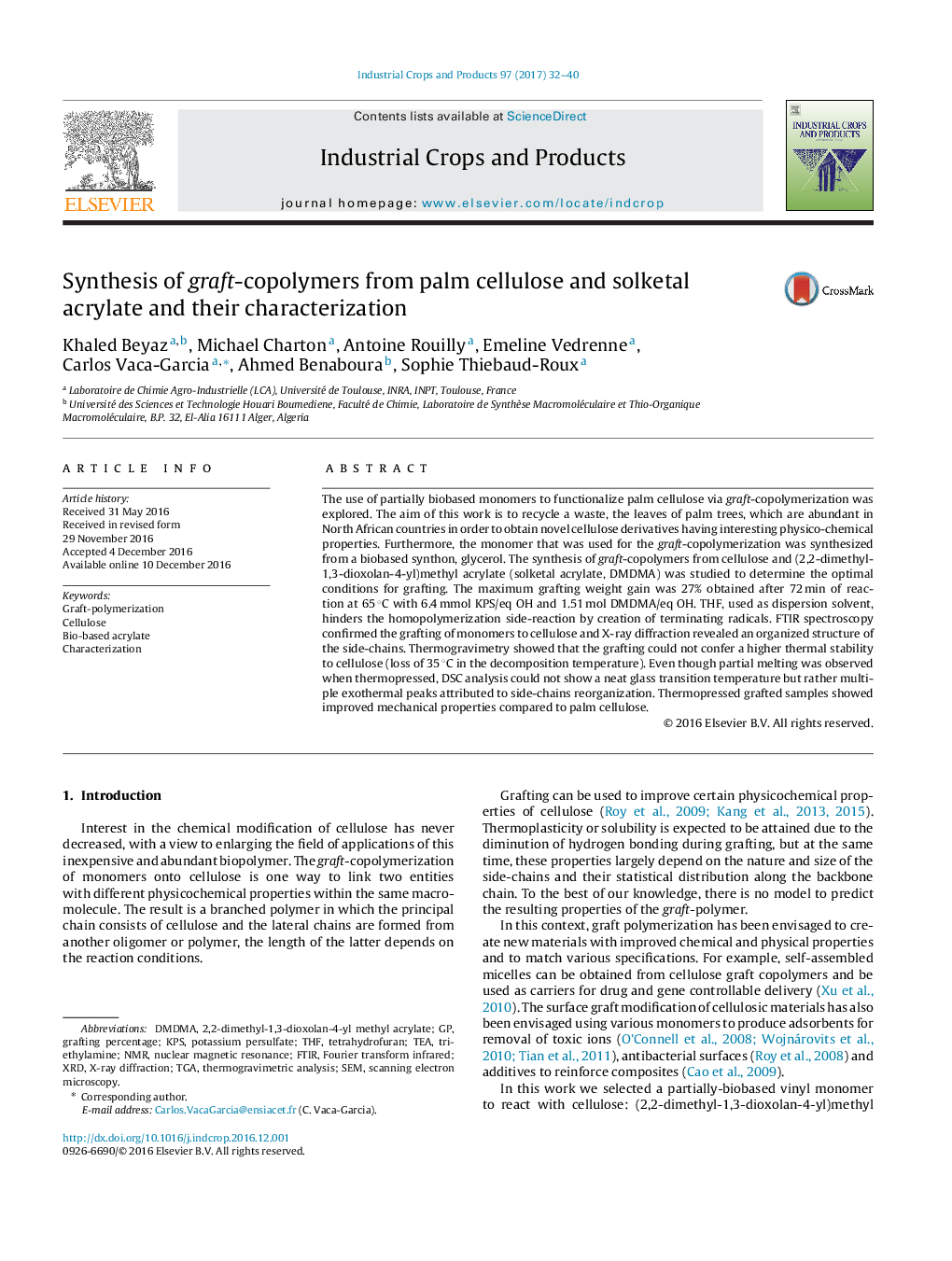| Article ID | Journal | Published Year | Pages | File Type |
|---|---|---|---|---|
| 5762261 | Industrial Crops and Products | 2017 | 9 Pages |
Abstract
The use of partially biobased monomers to functionalize palm cellulose via graft-copolymerization was explored. The aim of this work is to recycle a waste, the leaves of palm trees, which are abundant in North African countries in order to obtain novel cellulose derivatives having interesting physico-chemical properties. Furthermore, the monomer that was used for the graft-copolymerization was synthesized from a biobased synthon, glycerol. The synthesis of graft-copolymers from cellulose and (2,2-dimethyl-1,3-dioxolan-4-yl)methyl acrylate (solketal acrylate, DMDMA) was studied to determine the optimal conditions for grafting. The maximum grafting weight gain was 27% obtained after 72 min of reaction at 65 °C with 6.4 mmol KPS/eq OH and 1.51 mol DMDMA/eq OH. THF, used as dispersion solvent, hinders the homopolymerization side-reaction by creation of terminating radicals. FTIR spectroscopy confirmed the grafting of monomers to cellulose and X-ray diffraction revealed an organized structure of the side-chains. Thermogravimetry showed that the grafting could not confer a higher thermal stability to cellulose (loss of 35 °C in the decomposition temperature). Even though partial melting was observed when thermopressed, DSC analysis could not show a neat glass transition temperature but rather multiple exothermal peaks attributed to side-chains reorganization. Thermopressed grafted samples showed improved mechanical properties compared to palm cellulose.
Keywords
Related Topics
Life Sciences
Agricultural and Biological Sciences
Agronomy and Crop Science
Authors
Khaled Beyaz, Michael Charton, Antoine Rouilly, Emeline Vedrenne, Carlos Vaca-Garcia, Ahmed Benaboura, Sophie Thiebaud-Roux,
